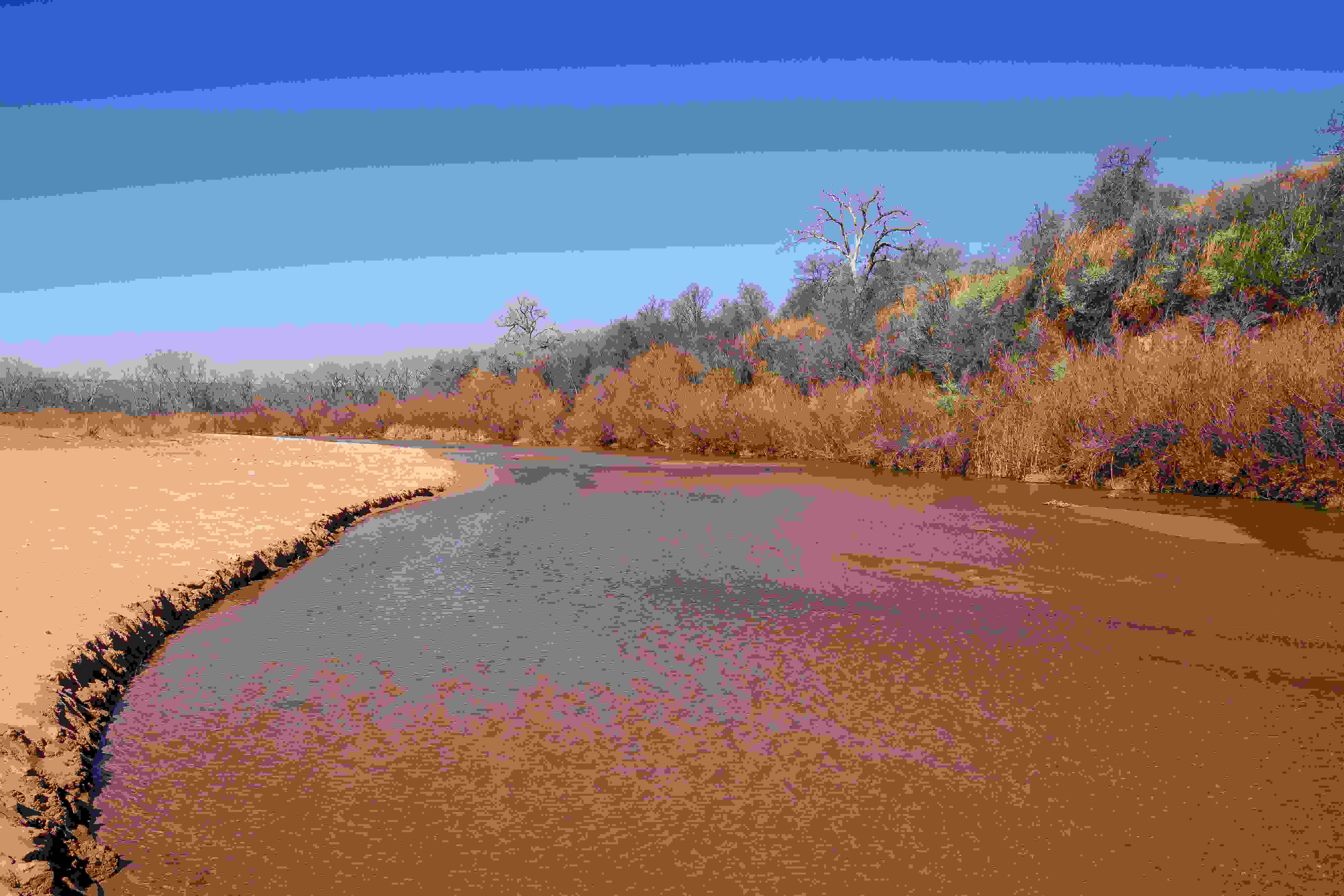The Canadian River in April 2023. (Photo by Ed Rhodes, TWRI.)
Peer-reviewed publications by Texas Water Resources Institute and Texas A&M AgriLife scientists
Let’s talk about PFAS: Inconsistent public awareness about PFAS and its sources in the United States: Allen Berthold, Ph.D., Texas Water Resources Institute (TWRI) interim director, Stephanie deVilleneuve, TWRI research specialist, Michael Schramm, TWRI research specialist, and Audrey McCrary, TWRI program specialist, have collaborated to produce one of the first research projects analyzing the public perception of Per- and polyfluoroalkyl substances, or PFAS, are a category of thousands of manufactured chemicals. The researchers examined U.S. residents’ knowledge of PFAS, experience with PFAS, and perceptions of potential environmental risks and health impacts related to PFAS. Read more about this research.
Assessing soil health in a thermic region of the southern great plains, using the Soil Management Assessment Framework (SMAF): Co-authored by Texas A&M AgriLife Research scientists, this research was focused on a tool that is used to quantify soil health, the Soil Management Assessment Framework (SMAF), and evaluating its accuracy. They tested soil samples and compared SMAF sensitivity to changes in soil properties and found that it would be necessary to use other measuring methods for certain soil types in certain thermic regions.
Thermal tolerance exceedances of an endangered unionid mussel in the Rio Grande Basin, with implications for river management: This study, co-authored by Texas A&M Natural Resources Institute and Texas A&M AgriLife Research scientists and collaborators, demonstrates how laboratory-derived thresholds can be used in conjunction with environmental data to evaluate the hydrological needs of aquatic organisms such as freshwater mussels. Their findings have implications for environmental flow regime planning for Texas rivers.
Water-related research and news from universities around Texas
Seasonal and nutrient controls on phytoplankton in the Aransas River tidal freshwater zone, Texas, USA: University of Texas Marine Science Institute scientists co-authored this study examining phytoplankton in the Aransas River. Phytoplankton are integral in tidal freshwater zones. The study looked at the impact on groups of phytoplankton to chlorophyll concentrations over an annual cycle.
Hydrological Transport and Fate of Brackish and Inorganic Contaminants with Anthropogenic Influence: In research co-authored by a University of Texas-Permian Basin scientist, this study sought to determine the contamination levels in the Permian Basin area. They found that inorganic pollutants resulted mainly from human impacts such as agriculture, fertilizers, and energy developments. The results provide new insights into inorganic pollutants and brackish aquifers in the Permian Basin, and scientists’ understanding of how groundwater resources respond to contaminants in dry regions.
Monitoring and evaluation of the water quality of the Lower Neches River, Texas, USA: Researchers at Lamar University analyzed the historical water sampling measurements and real-time water quality data collected with wireless sensors to monitor and evaluate water quality under different hydrological and hydraulic conditions in the Lower Neches River.
Prescribed Burning under Differing Forest Cover Types and Its Influence on Soil Water Infiltration Rates and Physical Properties in East Texas Forests: Co-authored by Stephen F. Austin State University scientists, this research measured soil water infiltration rates pre-burn (before the fire), post-burn (one month after the fire), and at green-up (three months after the fire) in areas utilizing prescribed fire with different rotations and seasons. Soil samples were also collected to determine the effects of prescribed burning on soil conditions. This study found there could be short-term (2–3 years) responses on soil physical properties and soil water infiltration rates from repeated burning treatments, regardless of overstory species.
The impact of post-cutoff bend curvature on channel kinematics in meandering rivers: An example from the Trinity River, Texas, USA: Researchers at the University of Texas at Austin used a 37-year record of Landsat-derived river channel centerlines from a meandering reach of the Trinity River and a newly developed directed graph-based approach for high-resolution channel tracking to identify a linkage between post-cutoff bend curvature and the magnitude, spatial extent, and temporal duration of cutoff influence on local and nonlocal channel bend kinematics. The results have implications for advances in the characterization and prediction of the spatiotemporal impact of cutoffs on local and nonlocal post-cutoff channel bend kinematics.


